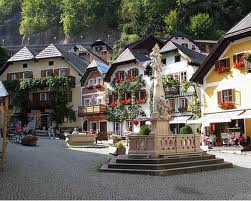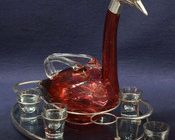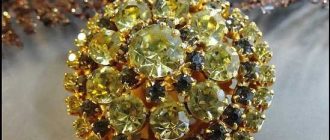Chinaware from Austria has caught the eyes of the world. Find out about the history, innovative techniques and exuberant decorative elements that the porcelain products of Austria are known for.
When we trace back the history of Austrian Chinaware we find that the foundations of the first hard paste porcelain factory were laid down in 1728 in the city of Vienna. An unlikely duo of a Dutchman and two runaway employees experienced in mixing and mechanical processes were the first to start producing chinaware. Although they managed to produce some impressive items they were forced out of business because of lack of funds in 1744. As a result the factory was bought over by the state and run as a royal enterprise for the next twenty years or so.
Austrian Chinaware in terms of quality
Initially the chinaware lacked the brilliance and whiteness in its paste due to the lack of availability of good ingredients. But as the factory came under state ownership better materials from Bohemia were supplied to the factory. They were then worked upon and perfected as per the standards of hard paste porcelain during those years. In terms of the glaze on the Austrian Chinaware it was never second to any but with the betterment of the factory it got even better and could match the top players like Dresden.
Austrian Chinaware in terms of diversity of design
The porcelain productions from the factory were not just restricted to customary table services rather they were into producing a variety of other items of decorative purport. The factory was especially known to produce some of the most amazing porcelain vases along with which they were into the production of figures and statuettes using different techniques.
The contour of most of their work was based on an imitation of Dresden models but during the rise of the Neo classical school of thought the designs came into their own. Although the Vienna factory is credited for producing some excellent designs and contours they largely remained inconsistent and wavered in terms of design. As time passed the work from the factory became more intricate and displayed the splendor which was characteristic of the Empire during those days.
The different processes
They used a number of different techniques when it came to decoration. Amongst the most popular types was modeling in high relief and molded ornaments in low relief that were created by being pressed in the paste. The factory also incorporated the piercing, painting, and fretwork processes in the making of their chinaware decorations.
The subjects for painted decorations generally revolved around Chinese motifs, flowers, leaves, fruits, figures, landscapes and scenes. Some low relief decorations even featured mythological subjects including famous battle scenes. In terms of colors it is noted that a large number of ground colors were common in these decorations. Amongst the criticisms against the Austrian chinaware is their tendency to be overly decorated.
Raised gilding was another feature that enhanced the decorative value of the porcelain productions. They were often painted over with several coats of gold with ornaments engraved into the gilding. The Austrians are also credited with making certain technical advancements related to the building and painting processes of chinaware. Although Austrian chinaware is of superior quality and is made with innovative techniques the appeal of the decorations may vary greatly from individual to individual.





